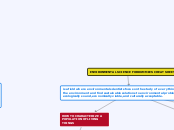av mayerlin hurtado 7 år siden
406
ENVIRONMENTAL SCIENCE FOR DUMMIES CHEAT SHEET

av mayerlin hurtado 7 år siden
406

Mer som dette
Creating a sustainable economy: Environmental economists seek to include the cost of environmental damage in product pricing through taxes, fines, and regulations.
Taking steps toward smarter land use: Both large-scale and small-scale possibilities include compact architecture and urban design to efficiently use land space,
Conserving water: Water conservation is the process of using less water to begin with and recycling or reusing as much water as possible.
Recycling: Doing so reduces trash and conserves natural resources.
Eating locally: Depending more on locally available food reduces the amount of energy used in food transportation and supports your local food-producing economy.
National Forest Management Act of 1976:
This law required that national forest resources be managed through an approach that considers how timber removal affects the ecosystem as a whole.
Safe Drinking Water Act of 1974:
This piece of legislation was aimed at improving public health by protecting public drinking water supplies from contamination.
Endangered Species Act of 1973:
The Endangered Species Act set up a process for legally recognizing and seeking to conserve plant and animal species in danger of extinction.
Clean Water Act of 1972:
Before this law, no rules mandated what type or amount of waste could be dumped into public waters.
Clean Air Act of 1970:
This law was the first to regulate air pollution on a national scale and set goals for improving air quality across the U.S. It was updated in 1990 to address ozone depletion and acid rain, in addition to overall air quality
An ecosystem recycles matter through the process of decomposition.
Energy moves around an ecosystem through the food web.
Ecosystems provide services, such as food production (farmland), water filtering (wetlands), carbon removal, raw material production (timber, rubber), and aesthetic value.
All the biological processes in an ecosystem run on energy captured from the sun.
An ecosystem can be as small as a drop of water or as large as a forest.
Age structure: The age structure of a population describes how many individuals fall into different age classes. For example, some populations consist mainly of young individuals, while others include individuals spread across many ages.
Sex ratio: The sex ratio of a population is the number of males versus females.
Distribution: The distribution of a population indicates where the individuals are located across the environment they occupy. For example, although 1,000 honeybees may live in your backyard, most of them stay in the hive, while only a few fly around to the flowers.
Density: The density of a population is the number of individuals (population size) in relation to the area they inhabit.
Size: The size of a population is the number of individuals that make it up.